| HOME |
| Hotels |
| Apartments |
| Attractions |
| Restaurants |
| Tickets & tours shop |
| Tours |
| Maps & travel planners |
| Airports & transport |
| Maps |
| Events |
| Shopping |
| Contact us |
|
| Pictures Tarragona Spain near Barcelona. Roman ruins Tarragona |
Pictures Tarragona Spain near BarcelonaUpdated February 2024 Tarragona near Barcelona. Pictures and information about the lovely city of Tarragona which is 1 hour south of Barcelona by car or train. Tarragona is the capital of the Catalonian province of the same name and the capital of the Catalan comarca (county) Tarragonès. 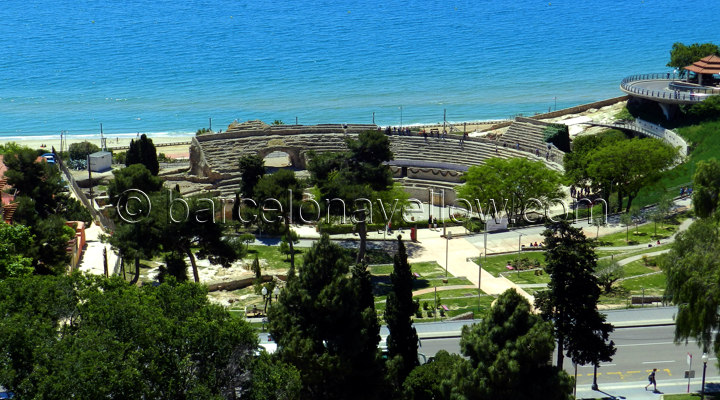 In Roman times Tarragona was the most important city in Hispania and famed for its climate and beauty. The Roman name for Tarragona was Tarraco. Tarraco was founded in the 1st century BC and is the oldest Roman settlement on the Iberian Peninsula and the oldest walled Roman city outside Italy. The city was established on the site of an Iberian settlement shortly after the Roman army landed on the Iberian Peninsula in 218 BC during the Second Punic War which was fought between the Romans and Carthaginians over control of the western Mediterranean Sea. Tarraco became the capital of Roman province Hispania Citerior and later of the province Hispania Tarraconensis. The full Latin name was Colonia Iulia Urbs Triumphalis Tarraco. Colonia Iulia: "Colonia" indicates that Tarraco was a Roman colony. "Iulia" is likely a reference to the Julian family, particularly associated with Julius Caesar. It signifies the city's connection to the Julian gens, indicating its foundation or development during the time of Julius Caesar or his successors. Urbs Triumphalis: "Urbs" means city, and "Triumphalis" suggests a connection to triumph, a significant ceremonial event in ancient Rome. The inclusion of "Triumphalis" in the name might highlight the city's historical or military significance, possibly linked to a military triumph or victories associated with the city. So, "Colonia Iulia Urbs Triumphalis Tarraco" essentially emphasizes Tarraco's Roman colony status, its association with the Julian family, and its historical and possibly military importance, as implied by the term "Triumphalis."Tarraco received the name "Colonia Iulia Urbs Triumphalis Tarraco" during the reign of Emperor Augustus. The city became a Roman colony in the early 1st century BCE, around 45 BCE, and it was subsequently granted the status of Colonia by Augustus in the late 1st century BCE. Tarraco, as "Colonia Iulia Urbs Triumphalis Tarraco," played a crucial role in the Roman province of Hispania and served as an important administrative, military, and cultural center in the region. Roman Emperors in Tarragona Roman emperor Augustus stayed in Tarraco to recuperate from illness after the Cantabrian and Asturian wars in 26-25 B.C. which were the final wars of the Roman conquest of the entire Iberian penisular. Roman emperor Hadrian spent the winter of 122/123 in Tarraco, where he restored the Temple of Augustus before crossing the Mediterranean into Mauretania in North Africa. Day tour Barcelona to Tarragona 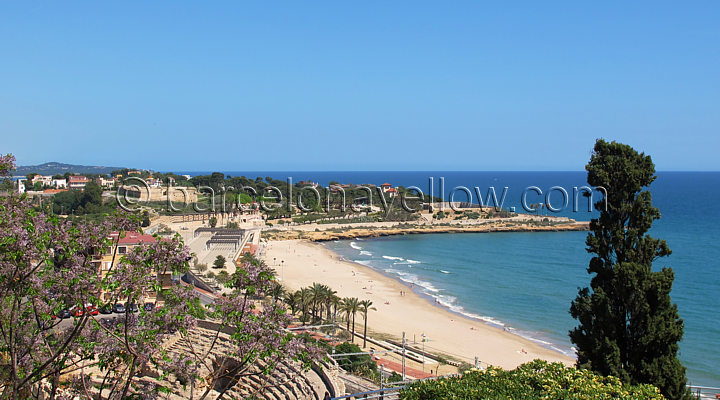 The Roman imperial city was called Tarraco There are many impressive Roman ruins in Tarragona, including the Roman amphitheatre, Roman circus, Roman walls, and a Roman aqueduct outside the city. The Roman ruins of Tarraco are a UNESCO World Heritage Site. The Amphitheatre of Tarragona is right on the coast of the Mediterranean Sea by çPlatja del Miracleç beach. Every year in May Tarragona organises a wonderful Roman festival called Tarraco Viva during which you can see re-enactments of gladiator fights in the amphitheatre 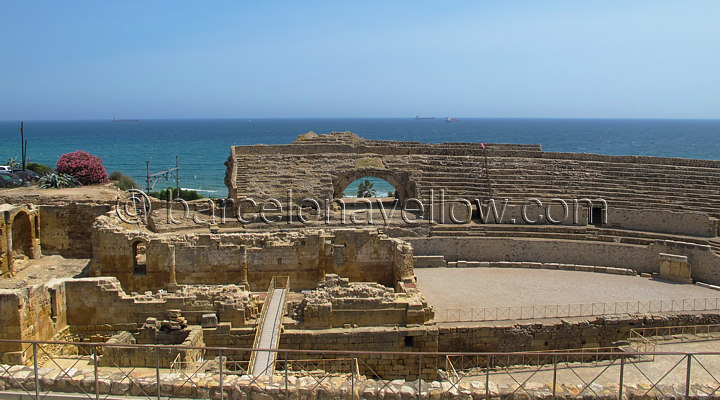 La Platja del Miracle beach 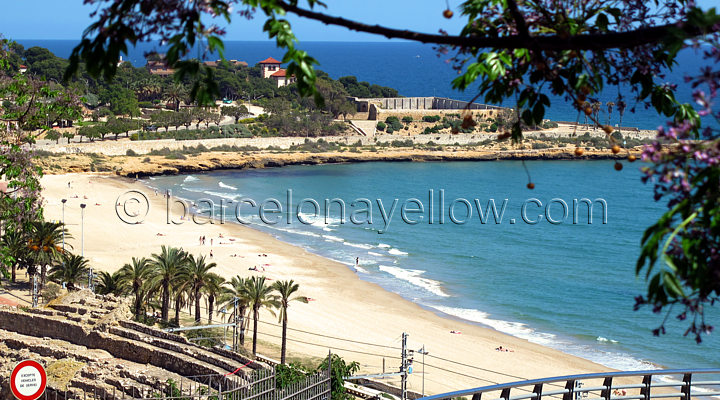 Tarragona's Roman aqueduct known as El Pont del Diable which means -The Devil's bridgeç  Below: Tarragona has a charming Gothic quarter located in the former Roman high area of Tarraco. 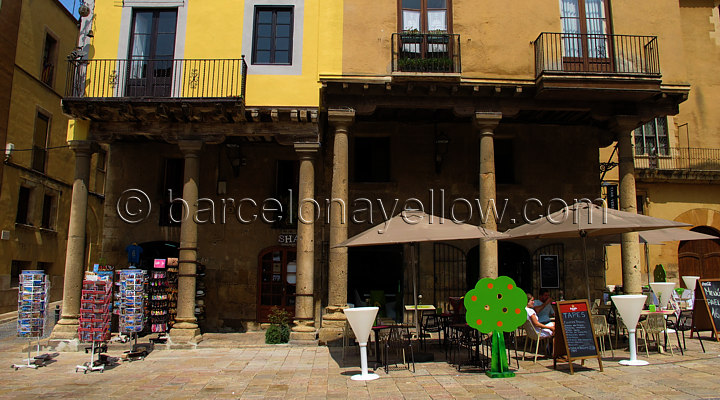 Below: Tarragona Cathedral. The cathedral is on the fomer site of the Roman Temple of Augustus. There is an admission fee to see the Cathedral, cloister and Diocesan museum. 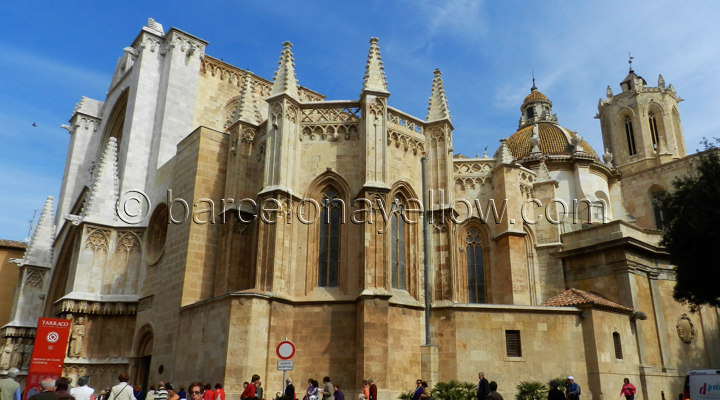 Below: Tarragona cathedral cloister 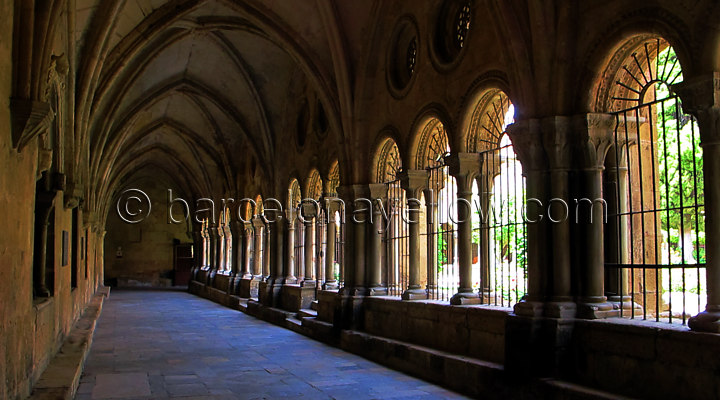 Below: Tarragona cathedral cloister gardens 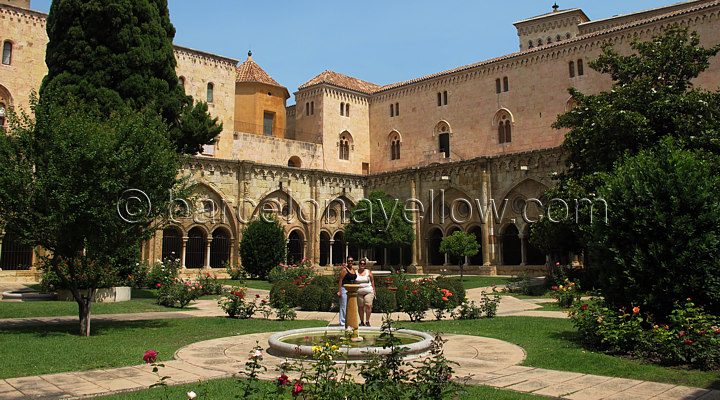 Below: Roman walls Tarragona 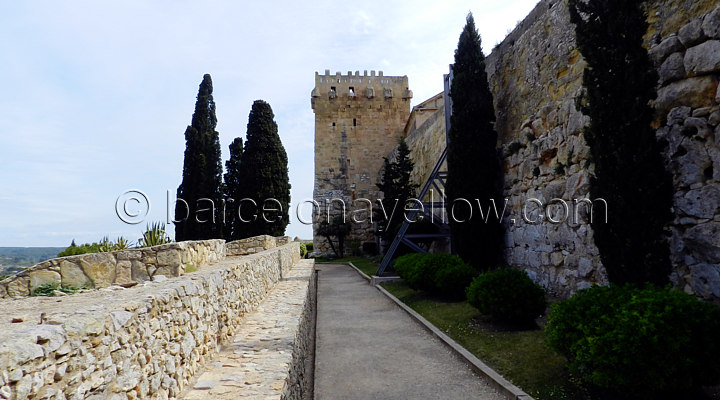 Below: Carrer Major. An old Roman road that became the main street of the medieval city. 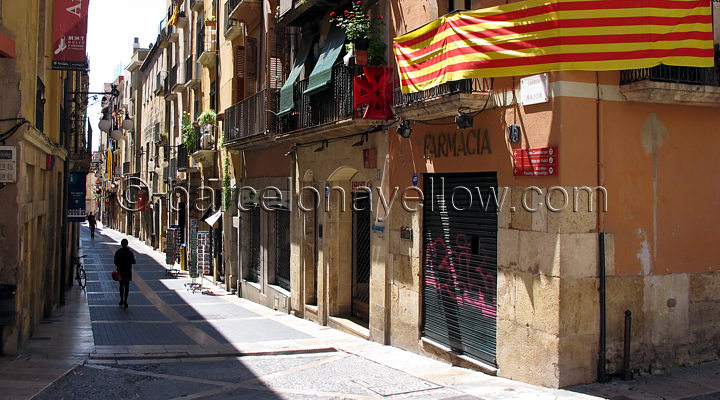 Below: El Monument als castellers - human towers monument in Tarragona on Ramba Nova by Catalan sculptor Francesc Anglès i Garcia. The castellers tower formation in the sculpture is a 4 x8. It was unveiled on 29th May 1999. Among the faces in the piña bottom section (pineapple) are artists Pablo Picasso and Joan Miró. 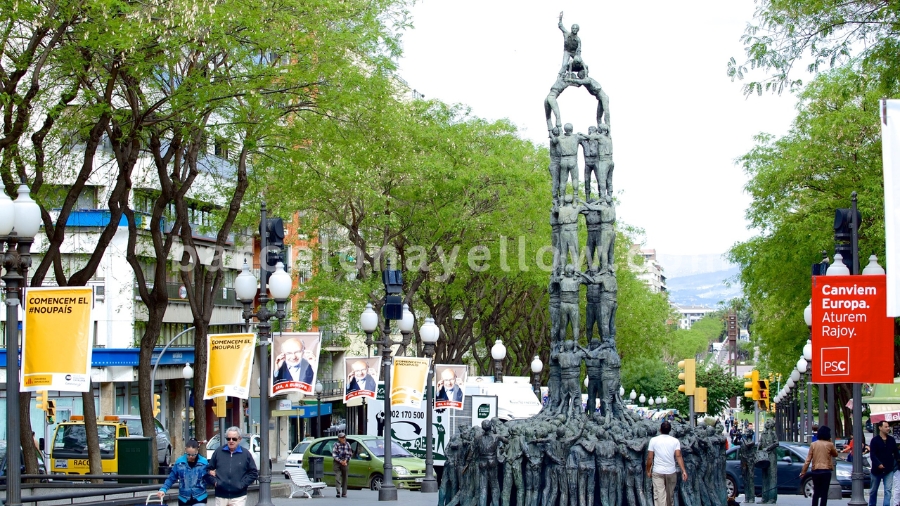 Below: Well preserved remnants of Roman circus at Tarragona  Below: Replica of "Augusto di Prima Porta" statue, The orginal statue was discovered on April 20, 1863 in the Villa of Livia at Prima Porta, near Rome, Italy. This replica statue in Tarragona is on the Archaeological walk by the Roman walls. It was a gift to Tarragona from Italian dictator Mussolini. It arrived in 1934 on the Italian ship 'Vedri' and was received with honours by Tarragona citizens headed by mayor Pere Lloret. In 27 BC Roman emperor Augustus took up residence in Tarragona to direct military campaigns against Cantabrian and Asturian tribes: Due to poor health he stayed in Tarraco which then became the de facto capital of the Roman empire for a while. In 15 AD a temple was erected in his honour. 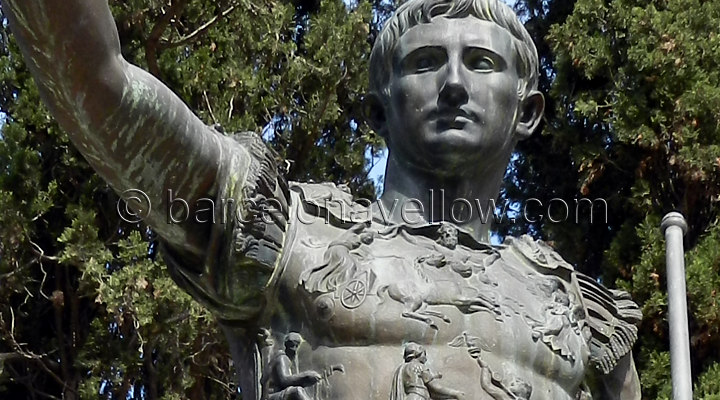 Below: The medieval part of Tarragona has many partial Roman ruins. 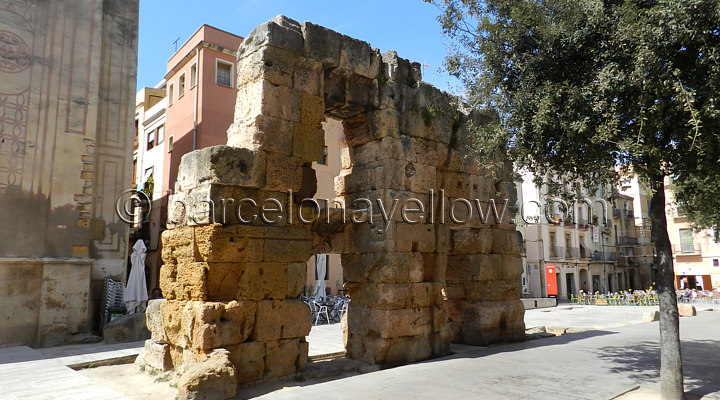 Below: gecko in Tarragona's Miracle park 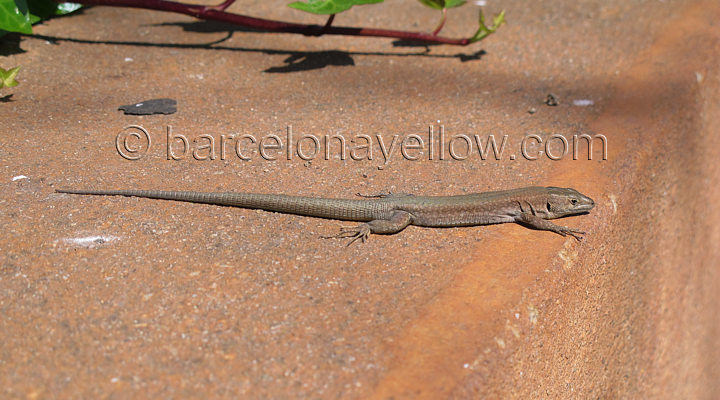 Visit Tarragona's Roman past on a wonderful Day Tour to Tarragona or on a Tarrogona shore excursion with pick-up at Tarragona cruise port. 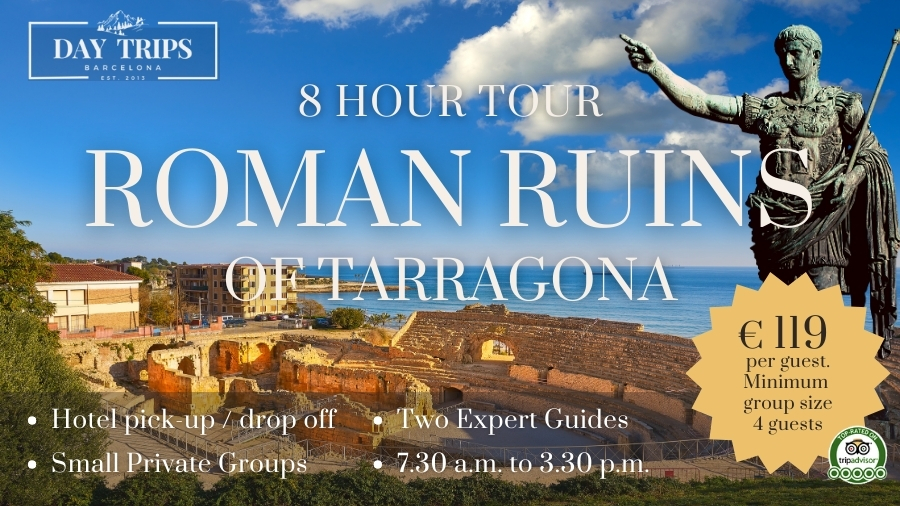 © Copyright Barcelonayellow.com. Do not copy from this page without permission All rights reserved |
| Last Updated on Thursday, 13 February 2025 13:12 |
|
|
Wednesday, 03 September 2025

Barcelona Spain - Barcelona Travel Guide - Copyright 2007-2025
Privacy Policy and Cookies • Legal Disclaimer • Copyright
BarcelonaYellow SiteMap 2025
Barcelona Latest News:
COVID-19 - Barcelona Latest News
Barcelona Safety Guide 2025
Barcelona Top 10 attractions 20254
Plan 3 days in Barcelona 2025
About us
About us
Contact us
Privacy Policy and Cookies
Copyright notice
Legal disclaimer
Twitter Barcelona events
Partnerships
Advertising
COVID-19 - Barcelona Latest News
Barcelona Safety Guide 2025
Barcelona Top 10 attractions 20254
Plan 3 days in Barcelona 2025
About us
About us
Contact us
Privacy Policy and Cookies
Copyright notice
Legal disclaimer
Twitter Barcelona events
Partnerships
Advertising
Accommodation
Hotels in Barcelona
Hotels near Fira Exhibition
Hotels near Camp Nou
Hotels near Cruise Ships
Short Stay Apartments
Practical information
Useful visitor information
How to get to Barcelona airport
Cruise Ship Terminals
Barcelona maps
Airport buses
Barcelona metro
Taxis
Travel cards
Hotels in Barcelona
Hotels near Fira Exhibition
Hotels near Camp Nou
Hotels near Cruise Ships
Short Stay Apartments
Practical information
Useful visitor information
How to get to Barcelona airport
Cruise Ship Terminals
Barcelona maps
Airport buses
Barcelona metro
Taxis
Travel cards
Things to do
Top 10 attractions Barcelona
Photos of Barcelona
Restaurant Guide
Nightlife Guide
Things to do in Barcelona
Barcelona beaches
Book tours and tickets
Skiing near Barcelona
Weather Barcelona
Weather in Barcelona
5 day forecast Barcelona
Top 10 attractions Barcelona
Photos of Barcelona
Restaurant Guide
Nightlife Guide
Things to do in Barcelona
Barcelona beaches
Book tours and tickets
Skiing near Barcelona
Weather Barcelona
Weather in Barcelona
5 day forecast Barcelona
Top Festivals and events
Barcelona Events 2025
Christmas in Barcelona
New Years Eve 2025
MWC 2025 Barcelona
Sant Jordi's Day
Barcelona Marathon
Barcelona Half Marathon
Easter
Festa de Gracia
La Merce Festival
FC Barcelona calendar
Barcelona Events 2025
Christmas in Barcelona
New Years Eve 2025
MWC 2025 Barcelona
Sant Jordi's Day
Barcelona Marathon
Barcelona Half Marathon
Easter
Festa de Gracia
La Merce Festival
FC Barcelona calendar
Moving to Barcelona
Moving to Barcelona
Long term apartment rentals
Relocation agencies
Real estate agencies
Spanish schools
Meeting people
Finding work
Yellow pages directory
Partner websites:
DayTripsBarcelona.com
Stepbac.com
PhotoMemoirs.co
Helpfurl.com
Moving to Barcelona
Long term apartment rentals
Relocation agencies
Real estate agencies
Spanish schools
Meeting people
Finding work
Yellow pages directory
Partner websites:
DayTripsBarcelona.com
Stepbac.com
PhotoMemoirs.co
Helpfurl.com

